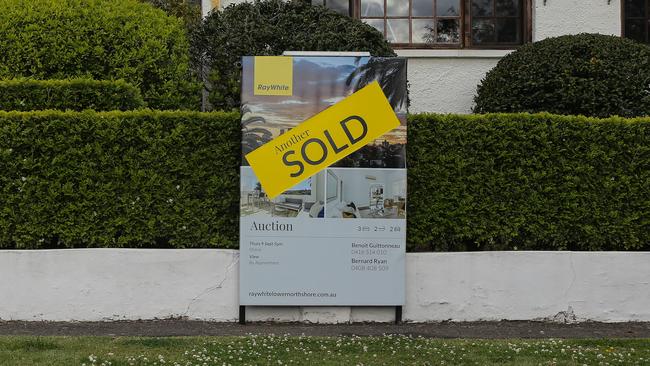Mortgage drain at decade high
Homeowners are spending more of their family incomes on mortgage repayments as property prices continue to rise.

The proportion of household income Australian families are committing to mortgage repayments is at the highest level in almost a decade as the spike in property prices disproportionately impacts first-home buyers.
Housing affordability worsened over the September quarter, with the average family now spending 36.2 per cent of their income on loan repayments. It is the highest level since the market emerged from the 2008 global financial crisis.
The Real Estate Institute of Australia’s latest Housing Affordability Report found NSW homeowners were dedicating 44.7 per cent of their incomes to pay their mortgage over the quarter, well above their Victorian counterparts at 37.2 per cent.
Homeowners in a majority of states are facing worsening affordability, but a slight 0.1 per cent reprieve was felt in Western Australia and the ACT.
The Northern Territory was the only jurisdiction to hold steady, although it is the only state or territory where it is more expensive to meet weekly rental agreements than it is to service a mortgage.
The median house in a capital city now costs $961,059, an increase of 4.5 per cent in three months and almost a quarter (23.3 per cent) over the past year. CoreLogic data shows five of the eight capital cities have recorded growth of more than 20 per cent, as has the combined regional market. At the same time, the Reserve Bank’s official cash rate hasn’t moved and the quarterly average viable and three-year fixed lending rates have remained steady.
REIA president Adrian Kelly said first-home buyers – who made up 35 per cent of all owner-occupiers over the period – needed to be better supported by government programs such as the First Home Loan Deposit Scheme and the First Home Super Saver Program, which could be expanded.
“As we attempted to start adjusting to the new Covid normal, buyer and investor interest shows little signs of being satiated,” Mr Kelly said.
“This competition means the average loan size to first-home buyers has increased to $459,256. This was an increase of 2 per cent over the quarter and 14 per cent over the past 12 months.”
As at June, the average family income had more than doubled (up 112.8 per cent) over the past 20 years. However, this was far lower than increases in both the size of the average mortgage – up 284.7 per cent from $157,239 to $548,323 – and the average home loan repayments (up 179.4 per cent).
Banking regulator APRA moved in October to tighten lending in response to the number of home loans being arranged at six times annual income.
Renters are also paying more, but not at the same rate as homeowners.
The average three-bedroom home now requires 26 per cent of a tenant’s income.




To join the conversation, please log in. Don't have an account? Register
Join the conversation, you are commenting as Logout